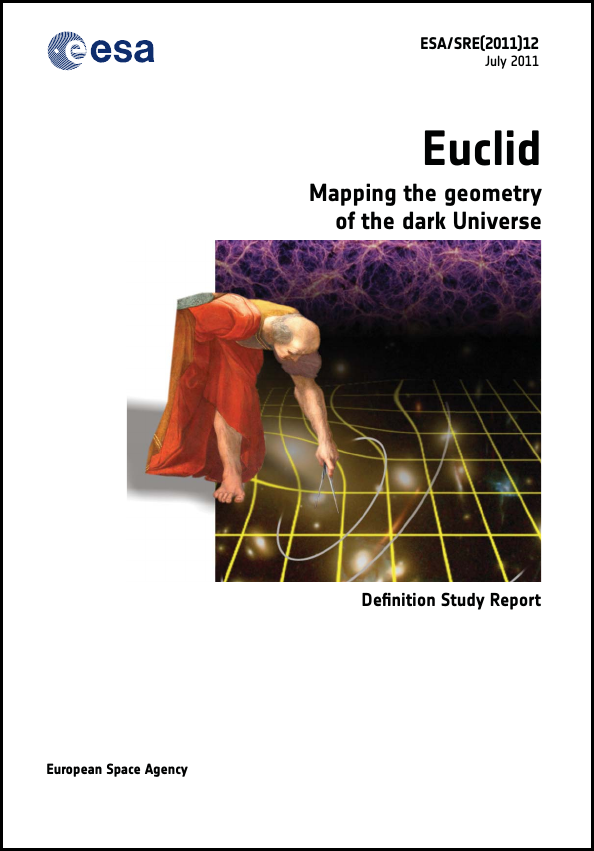Currently it is the most comprehensive summary of Euclid’s mission goals, its technology and science: the “Euclid Definition Study Report“, aka The Euclid Red Book. This 116 page ESA report from 2011 concludes Euclid’s initial design phase and describes Euclid at the point of adoption as a mission by ESA.

Do you want to learn the basics about Euclid’s core science goals? And the methodology to reach them? Or do you want to get an idea of the breadth of possible and planned legacy science? The Red Book will give an overview.
Euclid’s instrumentation, spacecraft and telescope design are laid out as well as the outline of the Science Ground Segment. The Red Book contains detailed and quantitative predictions for Euclid’s core cosmology science probes, as well as for a large range of potential legacy science projects, both stand-alone using only Euclid data, but also potential synergy projects with data from other telescopes and surveys. It also contains an extensive description on how which diagnostics actually impacted the design of the Euclid spacecraft and its instruments, and how mature different technology approaches were when Euclid was adopted by ESA as a mission.
This makes the Red Book the central reference for the general properties and science prospects of Euclid, but it’s also a very useful resource for potentially new science topics to be pursued with Euclid data after launch. You want to eventially propose a follow-up use of the Euclid spacecraft? The Red Book will tell you about the general limits of how such a survey could look.
The Red Book has been used accordingly. Since its publication it has been referenced by more than 2500 scientific publications, which currently puts it at #5 in citations of all 2011 astronomy papers on the Astronomical Data Service. It was cited more 300 in 2022 alone, with citation number rising every year. Whenever Euclid’s science objectives or target performance are references in project, the Red Book is the document of choice.
Lead author is Dr. René Laureijs, ESA’s Euclid project scientist – with the input from the impressive number of 218 co-authors – wrote this document at the point where the “study” Euclid turned into the “mission” it now is. Expert engineers and astrophysicists contributed from their relative fields of expertise. With at this point about 6 months before launch it will take some time before a next summary of this kind will be compiled using actual performance numbers of the actual spacecraft. Hence the 2011 Red Book will continue to be the main Euclid reference for the time being – on its way accumulating its 3rd 1000 citations before Euclid’s launch.



